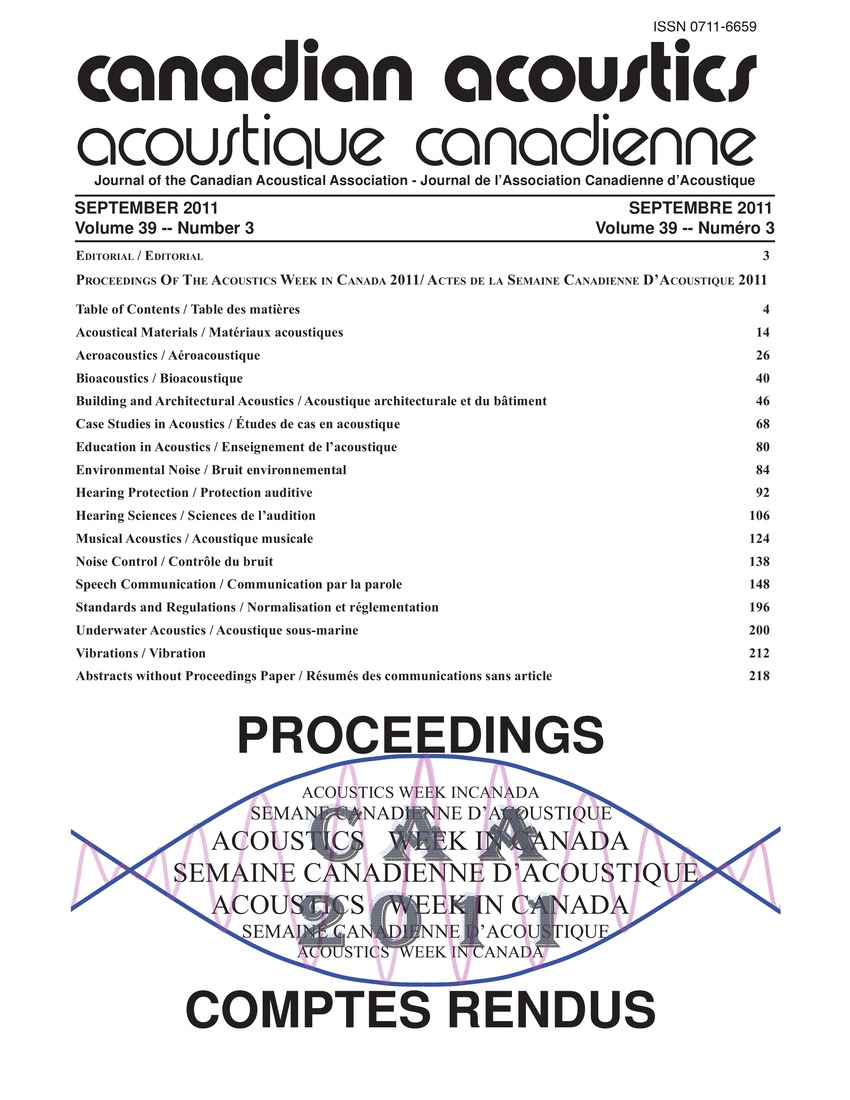AN ultrasound imaging study of the tense-lax distinction in canadian french vowels
Keywords:
Ultrasonic imaging, Articulatory gestures, Canadian french, Speech production, Ultrasound imagingAbstract
An ultrasound imaging study of the tense-lax distinction in Canadian French vowels is presented. Advanced tongue root (ATR) vowels are produced with significant tongue root advancement, creating a large pharvngeal resonant cavity that is not present during production of non-advanced vowels. Cross-linguistically, a number of gestural strategies are employed to create a distinction among so-called tense and lax vowels. In Igbo, these vowels differ only in tongue root position, while in Akan and Germanic languages such as English, they differ in both tongue root position and tongue body height. The purpose of this experiment is to determine which articulatory gestures are used to distinguish between tense and lax vowels using ultrasound imaging to directly measure tongue position during speech production of native speakers of CF.Additional Files
Published
How to Cite
Issue
Section
License
Author Licensing Addendum
This Licensing Addendum ("Addendum") is entered into between the undersigned Author(s) and Canadian Acoustics journal published by the Canadian Acoustical Association (hereinafter referred to as the "Publisher"). The Author(s) and the Publisher agree as follows:
-
Retained Rights: The Author(s) retain(s) the following rights:
- The right to reproduce, distribute, and publicly display the Work on the Author's personal website or the website of the Author's institution.
- The right to use the Work in the Author's teaching activities and presentations.
- The right to include the Work in a compilation for the Author's personal use, not for sale.
-
Grant of License: The Author(s) grant(s) to the Publisher a worldwide exclusive license to publish, reproduce, distribute, and display the Work in Canadian Acoustics and any other formats and media deemed appropriate by the Publisher.
-
Attribution: The Publisher agrees to include proper attribution to the Author(s) in all publications and reproductions of the Work.
-
No Conflict: This Addendum is intended to be in harmony with, and not in conflict with, the terms and conditions of the original agreement entered into between the Author(s) and the Publisher.
-
Copyright Clause: Copyright on articles is held by the Author(s). The corresponding Author has the right to grant on behalf of all Authors and does grant on behalf of all Authors, a worldwide exclusive license to the Publisher and its licensees in perpetuity, in all forms, formats, and media (whether known now or created in the future), including but not limited to the rights to publish, reproduce, distribute, display, store, translate, create adaptations, reprints, include within collections, and create summaries, extracts, and/or abstracts of the Contribution.


